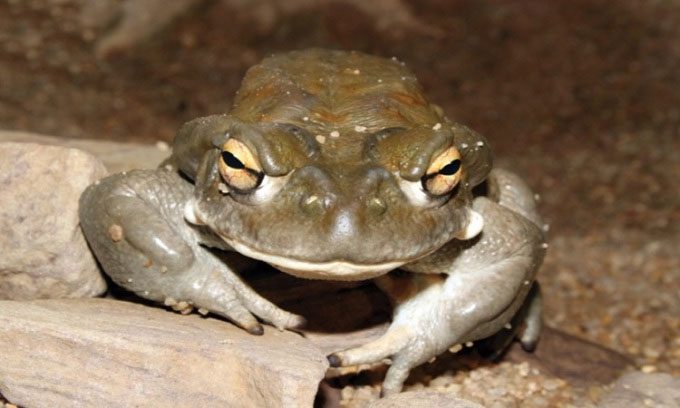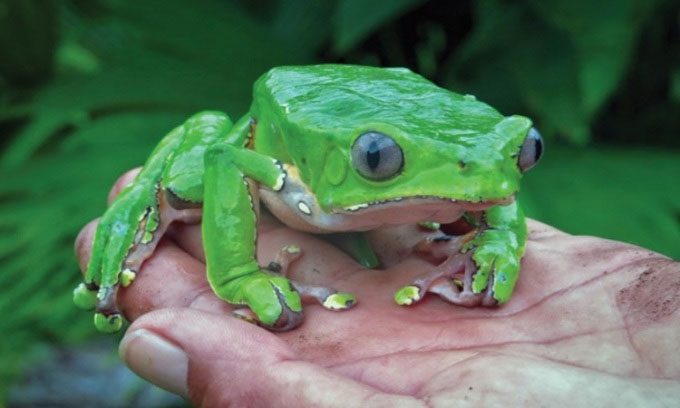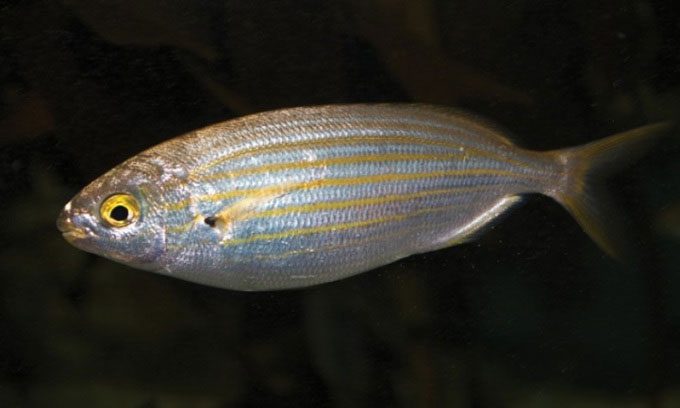The Sonoran Desert Toad, Giant Monkey Frog, California Harvester Ant, and Sarpa Salpa can produce hallucinogenic substances in their venom that paralyze their enemies.
Sonoran Desert Toad (Incilius alvarius)
Habitat: Sonoran Desert, southwestern United States and northern Mexico

The Sonoran Desert Toad is relatively large. (Photo: Wikimedia).
The Sonoran Desert Toad, also known as the Colorado River Toad, is one of the largest toad species in North America. It secretes an enzyme that converts bufotenin, a compound found in many other toads, into 5-MeO-DMT, a powerful hallucinogen related to DMT. The Sonoran Desert Toad excretes a toxic mixture containing 5-MeO-DMT from parotid glands located behind each eye and glands in its legs. When predators ingest it in large amounts, the venom can cause vomiting, cardiac arrest, and even death. Scientists are still unsure why the Sonoran Desert Toad produces 5-MeO-DMT, as it is the only toad species known to produce this compound.
Giant Monkey Frog (Phyllomedusa bicolor)
Habitat: Amazon Basin in South America

The Giant Monkey Frog secretes a compound called kambô used by indigenous shamans as a stimulant. (Photo: Inaturalist).
Researchers are not in agreement on whether kambô, the venom secreted by the Giant Monkey Frog, should be classified as a hallucinogen. Among indigenous peoples in southwestern Amazon, the secretion from the frog’s skin has been used as a stimulant in shamanistic rituals for centuries. It is also often applied to small, shallow burns on the body to enhance endurance for hunters.
When predators attempt to swallow the frog, kambô can induce vomiting, convulsions, and changes in heart function. Researchers are still trying to decipher this unique compound to explain its effects, but they know that the Giant Monkey Frog produces over 200 short protein segments that may influence bodily functions, some of which have great potential for pharmaceutical use in the future.
California Harvester Ant (Pogonomyrmex californicus)
Habitat: southwestern United States and northern Mexico

Native Californians consume harvester ants in a religious ritual. (Photo: Inaturalist)
The venom of the California Harvester Ant is composed of enzymes. Indigenous people in central California used to consume these ants during religious rituals. They would swallow hundreds of live ants rolled into balls made of eagle feathers. Naturally, they would be stung from the inside. Justin Schmidt, an entomologist at the Southwest Biological Institute and the University of Arizona, Tucson, states that the pain from being stung by multiple ants simultaneously, combined with extreme cold, fasting, and sleep deprivation in some cases, can induce hallucinations in individuals.
The venom from a single harvester ant is enough to kill a mouse. A human could die from consuming 1,000 ants. However, some animals, such as the horned lizard (Phrynosoma solare), possess mucous in their mouths and digestive systems that allow them to consume hundreds of ants. The compounds in their blood can neutralize the venom.
Sarpa Salpa (Sarpa salpa)
Habitat: temperate and tropical waters from the Atlantic coast of Africa to the Mediterranean Sea

Sarpa Salpa. (Photo: Flickr)
Sarpa Salpa can induce visual and auditory hallucinations when consumed, although reported cases are extremely rare. Two cases of fish-induced hallucination were documented in 2006 in the journal Clinical Toxicology. In one case, a man who ate grilled Sarpa Salpa experienced hallucinations of animals screaming and giant arthropods crawling around his vehicle. The symptoms disappeared approximately 36 hours after the patient consumed the fish. Researchers are still unsure of the compound responsible for the toxicity. Evolutionary biologist Leo Smith at the University of Kansas, Lawrence, who studies the history and diversification of fish, suspects that the compound may be a byproduct of the fish’s diet.





















































